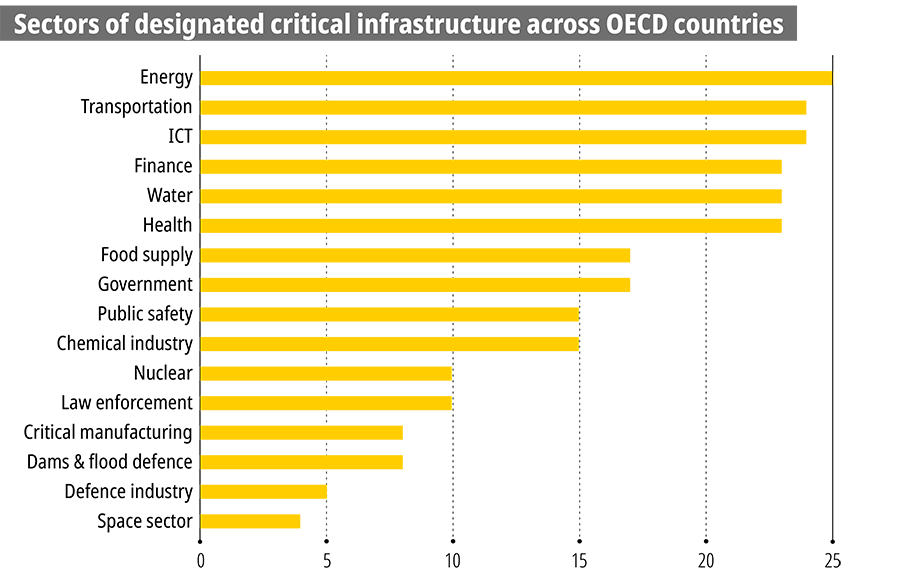Domestic policy tools: Minimize exposure to shocksInfrastructure |
IssueEnsuring the resilience of critical infrastructure underpins the flow of goods, services, and people. Shift focus from asset protection to system resilience can account for increased interconnectedness and interdependencies between infrastructure assets and sectors. Since 2000, most OECD governments have developed dedicated critical infrastructure policies from a security lens perspective. However, shock events ‒ such as the recent ship obstruction in the Suez Canal, the Great East Japan Earthquake, Hurricane Harvey in the United States, the cyber-attacks on the Ukrainian electricity grid, or the Genoa bridge collapse in Italy ‒ have demonstrated the diversity of disruptions that can affect critical infrastructure and the cascading series of failures they can generate. These disruptions underscore the importance of complementing sectoral and single-hazard policies with holistic systems approaches, such as those recommended in the OECD Policy Toolkit in the Governance of Critical Infrastructure Resilience or in the OECD Recommendation of the Council on the Governance of Infrastructure. Policy action
Related tools & publications |

